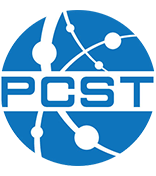Time inside the Dome: How astronomical time is depicted and communicated in planetarium sessions
Author: Joana Marques – University of Macau, China
Co-authors:
- Andrew Carlin – University of Macau, China
- Miguel Gomes – Natural History and Science Museum of the University of Porto, Portugal
- Ricardo Moutinho – University of Macau, China
Cosmological time, and the connection between time measurement and astronomical events, are central to astronomy and astronomy communication, yet people’s use of time concepts in astronomy outreach activities have not received sufficient attention in the research literature. How is time depicted and communicated in outreach contexts? In this paper we present an analysis of the communication of time concepts in planetarium sessions. We studied more than 20 events in different Portuguese institutions (the Geophysical and Astronomical Observatory of the University of Coimbra, the Museum of Natural History and Science of the University of Lisbon, and various schools in Portugal). Participants in these sessions varied: school children between 3 to 12 years old, families and adults. Data were collected during the summer of 2019. Taking Ethnomethodology and Conversation Analysis (EM/CA) as our approach, we analyse instances of actual events in planetarium sessions. EM/CA consider social reality and meaning-making as phenomena achieved and produced by the participants. Transcripts from recordings of these sessions enabled in-depth study of how concepts were communicated. Studying real-world occurrences in detail reveals the taken-for-granted work (the natural actions and interactions) done by people to produce those events, such as talking about astronomic time in the planetarium. By presenting the concepts people use affords exploration of differences and similarities in temporal concepts between public and communicators. Our analysis reveals that people make sense of time through their in situ work of making an astronomy outreach activity happen. In the data analysed, a frequent aspect concerning time and time concepts is the connection between time and the periodicity of celestial movements. Time is a ubiquitous concept, perceived and available interactionally. Therefore, detailed study of real events can certainly be applied in other areas to reveal how, in practice, time is communicated and understood.
(research supported by the FDCT grant# 0054/2019/A1)
The author has not yet submitted a copy of the full paper.
Presentation type: Individual paper
Theme: Time
